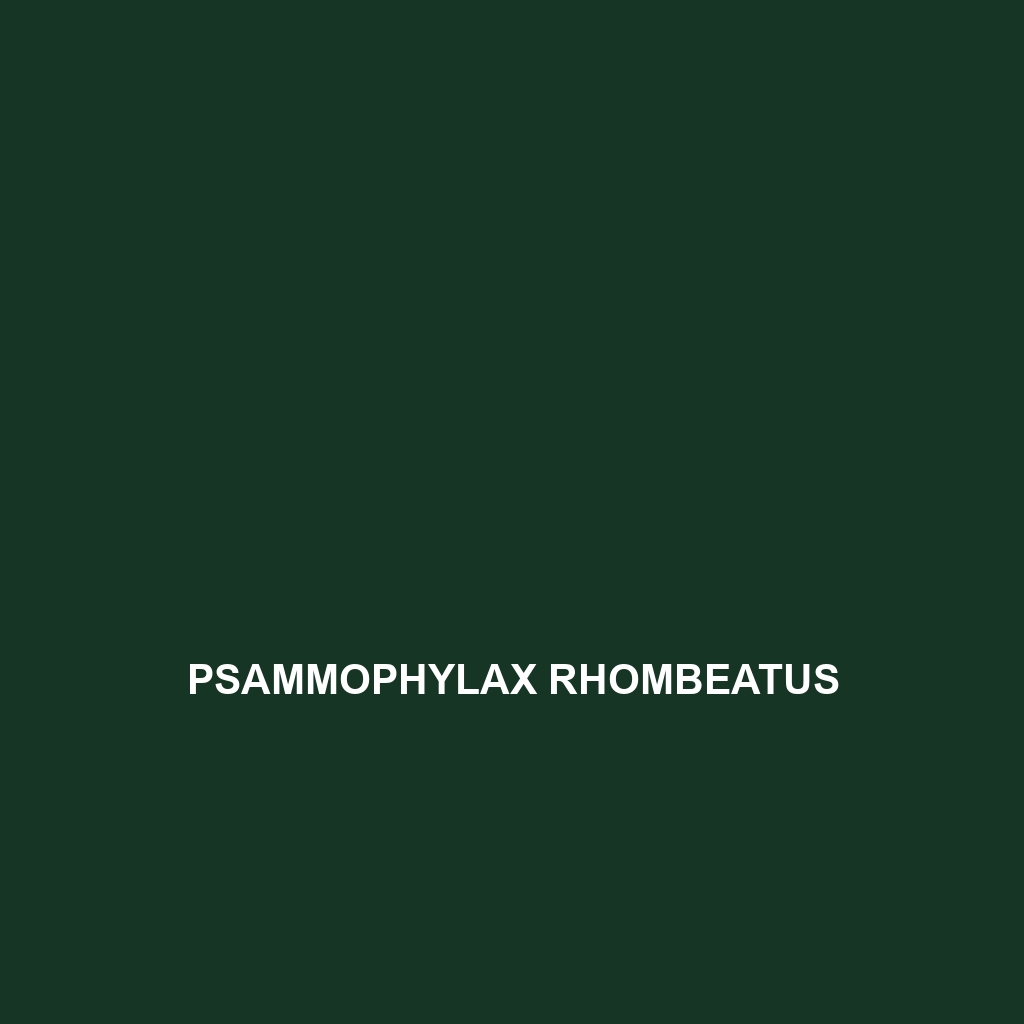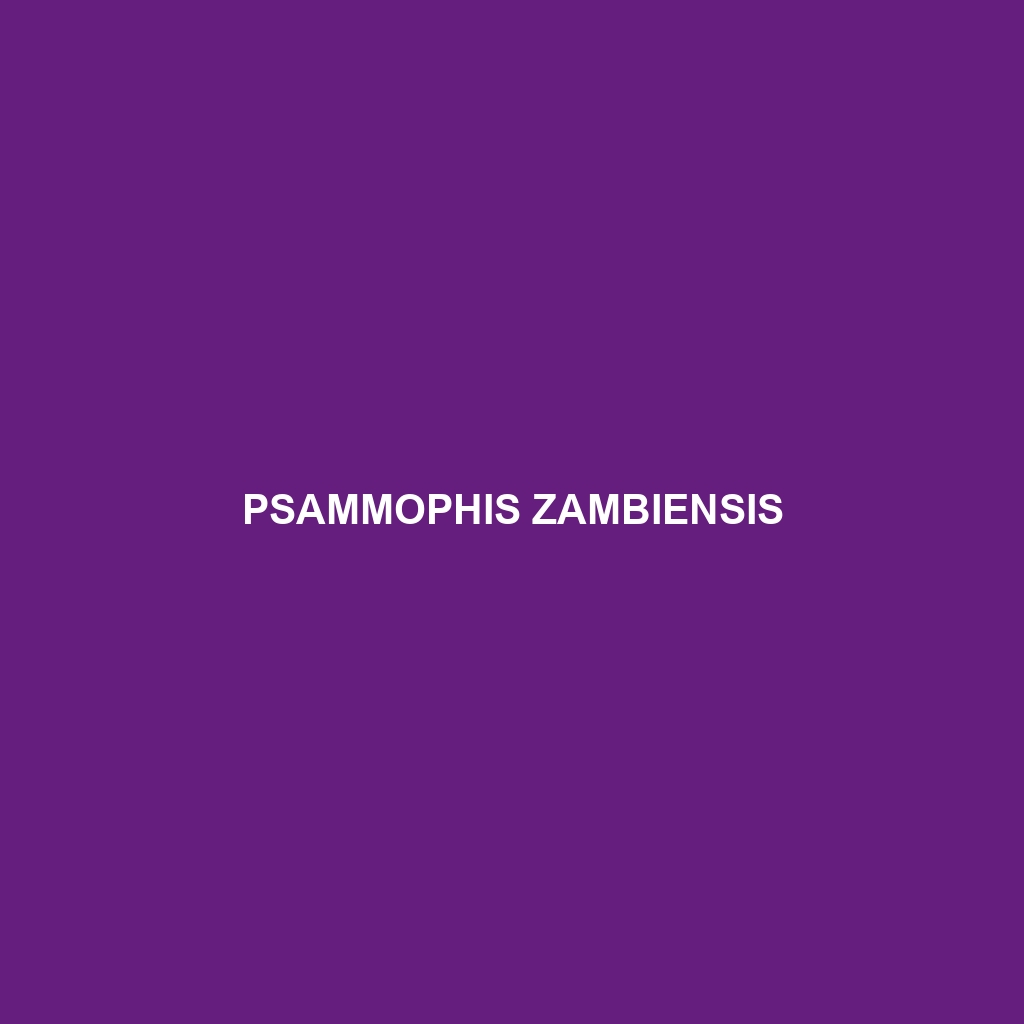Discover the Psammophylax ocellatus, commonly known as the spotted rock snake, a medium-sized inhabitant of sub-Saharan Africa characterized by its striking ocelli markings, diurnal behavior, and varied diet of small mammals and reptiles. With a conservation status of Least Concern, this adaptable snake plays a crucial role in maintaining ecosystem balance through its predation and prey relationships.
Tag: snake facts
Psammophis zambiensis
<p><b>Psammophis zambiensis</b>, or the Zambian sand snake, is a slender, agile reptile native to southern Africa, thriving in warm, sandy habitats. This carnivorous snake, reaching up to 1.2 meters (4 feet) in length, preys on small vertebrates and insects, playing a vital role in its ecosystem.</p>
Psammophis punctulatus
<b>Psammophis punctulatus</b>, commonly known as the dotted sand snake, is a slender, diurnal snake that thrives in sandy habitats across sub-Saharan Africa. With its striking camouflage and versatile diet of small mammals, lizards, and insects, this resilient predator plays a vital role in maintaining ecosystem balance.
Psammophis lineolatus
<p>Discover the <b>Striped Sand Snake (Psammophis lineolatus)</b>, a swift and agile predator native to southern and eastern Africa, known for its distinctive light brown or pale yellow coloration with dark vertical stripes. Thriving in warm, arid habitats, this snake plays a crucial role in maintaining ecological balance by controlling local prey populations.</p>
Protobothrops tokarensis
Protobothrops tokarensis, or the Tokara viper, is a stunning snake native to Japan’s Tokara Archipelago and Kyushu, known for its striking brown and orange patterns, robust body, and nocturnal hunting habits. This carnivorous species plays a vital role in its ecosystem, regulating small mammal populations and exhibiting unique reproductive traits, including live birth of young.
Protobothrops trungkhanhensis
Protobothrops trungkhanhensis, commonly known as the Trung Khanh Mountain Viper, is a striking snake native to the rainforests of Southeast Asia, particularly Vietnam. This nocturnal predator exhibits distinctive brown and green patterns for camouflage, grows between 60 cm to 120 cm in length, and plays a crucial role in maintaining ecological balance by preying on small mammals, birds, and amphibians.
Protobothrops elegans
<h2>Elegant Pit Viper - Protobothrops elegans</h2> <p>The <b>Elegant Pit Viper</b> (<i>Protobothrops elegans</i>) thrives in the tropical and subtropical regions of Southeast Asia, featuring striking green and brown patterns for camouflage. This nocturnal predator primarily feeds on rodents and small mammals, plays a vital role in maintaining ecological balance, and exhibits unique reproductive behaviors, giving birth to live young.</p>
Prosymna angolensis
Discover the Prosymna angolensis, or Angolan brown snake, a slender predator measuring 60 to 80 cm, thriving in Angola's tropical rainforests and savannas. Adaptable and nocturnal, it primarily feeds on small mammals and amphibians, exhibiting keen camouflage and stealth as it plays a crucial role in its ecosystem.
Platyceps smithii
The Platyceps smithii (Smith's Racer) is a slender, diurnal snake native to the eastern Mediterranean, characterized by its pale to dark brown coloration and distinct stripes. Thriving in various warm habitats, it primarily feeds on insects and small mammals, playing a crucial role in its ecosystem by regulating pest populations.
Platyceps rogersi
Discover the <b>Platyceps rogersi</b>, a slender, medium-sized snake thriving in Africa's savannas and grasslands. Known for its smooth, shiny scales and remarkable adaptability, this carnivorous reptile primarily preys on small mammals and lizards while playing a crucial role in its ecosystem.








